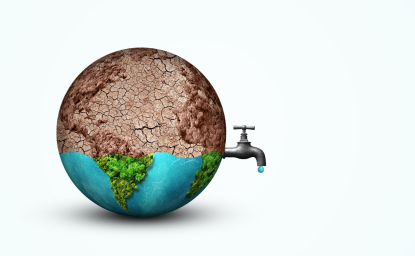The Biden Administration’s season of engagement with China has led to tangible progress. A series of visits by high-ranking administration officials culminated in the announcement of a new structure for US-China economic dialogue, under which newly created US-China working groups will meet to discuss policy and exchange information.
This is an important development – it represents tangible progress on the administration’s China strategy of “invest, align, compete.” Secretary of Commerce Gina Raimondo explained it succinctly; “This is about our very consequential trade relationship, which is good for America, good for China and good for the world,” she said. During a recent panel discussion at the Wilson Center she also stated, “We need to do business with China, wherever we can, promote where we can, and protect where we must.”
The China Question: Engage or Oppose?
This approach stands in contrast to the political factions – vocal and militant in both the US and China – that seek outright confrontation which is influencing policy makers stuck between the bellicose approach and a more conciliatory one argued by many of our allies. The tension between the two – and their uneasy coexistence – currently dominate US-China policy analysis and has been analyzed in many forums, including The Wilson Center’s. In a June podcast, Kissinger Institute director Robert Daly described the gulf between the positive tone that marked Secretary of State Anthony Blinken’s China visit and the harsh rhetoric that preceded and followed it – rhetoric that became even harsher after President Biden, trying to walk a line between the two camps, referred to President Xi as a “dictator.” Global fellow Keith Rockwell examined the tension in evidence in Treasury Secretary Janet Yellen’s April statement that while “we do not seek to ‘decouple’ our economy from China’s,” the US would continue to assert its national security interests including in economic terms; her assertion of the need for security-based restrictions on economic ties with China is undermined by continued US reliance on tariffs, Rockwell suggested. In late August, in the wake of Secretary Raimondo’s China visit, Mark Kennedy, director of the center’s Wahba Institute for Strategic Competition spoke with The Washington Post’s Josh Rogin about China’s refusal to buy into Raimondo’s balanced approach to economic engagement and US security. China’s economic crackdowns “do not make sense if the goal is to promote long-term economic growth, but they could make sense if they are meant to help [China] endure a conflict with the West,” Kennedy said.
Pragmatism Is a Third Way
With these tensions in evidence and with the outcome in doubt, it is important to call out the advantages of a third way – a more pragmatic approach. It is possible to build a framework for US-China cooperation via clearly defined programs with limited scope, multiple participants and tangible benefits – a framework that takes a step beyond the “intent to collaborate” represented by the working groups, toward programs that produce concrete results.
I propose a Global Water Technology Fund focused on the water crisis, and the development of commercially viable water-related technologies. The central idea is that US and China, along with key participants, would form a consortium focused on investing in proven water-related technologies as well as making seed investments in new technologies. The intent would be to accelerate the commercialization and deployment of these technologies – to conserve water resources globally. The Wilson Center is no stranger to that approach. In fact, starting in 1997 it pioneered The China Environment Forum dedicated to forge US-China relations on environmental challenges in particular water issues and has issued a series of analysis and recommendations regarding the water crisis.
The Water Crisis: Urgent and Far-Reaching
As was made clear most recently at the U.N. 2023 Water Conference, we are in the midst of a water crisis – driven by climate change, population growth, irrigation, livestock, energy production, unconstrained manufacturing and a lack of water infrastructure which is growing progressively more acute. According to newly released data from the World Resources Institute, 25 countries, housing 25% of the world’s population, face “extremely high” water stress. And at least half of the world’s population, approximately 4 billion people, live under highly water-stressed conditions for at least one month each year. By 2050, an additional billion people will be living in high water stress areas.
The economic impact is significant. The authors of a recent World Bank study estimate that severe drought can reduce economic growth by 0.85 percentage points. For an average growth rate during the period under study of 2.19% for emerging economies that represents 38% of economic growth rate that would disappear in severe drought conditions!
The US is no stranger to water crises – look no further than to California’s cycle of drought and wildfires and its impact on industries, or the impact of water contamination caused by Florida’s sugar industry on Florida’s ecosystem and economy. Under the pressure of climate change, new water emergencies seem to emerge constantly. In New Orleans, the Army Corps of engineers is preparing to barge in as much as 36 million gallons of bottled water as the city’s drinking water supply is threatened by saltwater intrusion. A draft report by the president’s National Infrastructure Advisory Council lays out what is really at stake. It notes that “the nation’s current use of water is unsustainable, in part due to unsustained investment. Decades of chronic underfunding and underinvestment have impacted the condition, reliability, and resiliency of the nation’s critical water infrastructure.” The NIAC report adds that the US government’s share of capital costs in water infrastructure went from roughly 60% in 2010 to under 10% in 2020 and cites the American Society of Civil Engineers report that in 2019, capital spending for drinking water and wastewater systems (local, state and federal combined) was $48 billion against total investment needs of $129 billion—an $81 billion gap. A recent New York Times investigation spotlights the depletion of groundwater reserves across the US, reporting that 45% of the wells show a drop in water levels to record lows since 1980, and describing the threat to “the long-term survival of [US] communities that depend on ground water and lack of alternatives.”
China faces a similar crisis. China’s water crisis has been decades in the making. It has its origins in Mao Zedong’s Great Leap Forward, specifically his program to electrify the North China Plain which was amazingly characterized as a “war on nature.” Electrification allowed millions of farmers to begin pumping groundwater. What happens when you put a million straws into the aquifer? As in the US, it collapses. The drawdown in China has been catastrophic, leading to severe salt and other total dissolved solids (TDS) intrusion, as well as large-scale land subsidence because of aquifer collapse. Today, 80% to 90% of China’s water is now unfit for human consumption. China has 18.5% of the world’s population but only 5.1% of its fresh water. China has increasingly become a food importer over the past two decades, and drought and heat have driven China to even higher levels of agricultural imports. China must now maintain a strategic grain reserve, similar to our strategic petroleum reserve all of which explains, in part, China’s desire to develop long-term supply chains to guaranty food and energy security.
The impact on geopolitical security is severe as well. The Pentagon’s 2021 Climate Risk Analysis and subsequent updates, as well as reports by The World Economic Forum and The Wilson Center, describe how drought, crop failures, water scarcity and flooding drive mass migration, destabilizing already-unstable regions and in the worst cases lead to state failure.
A US-China Water Technology Investment Fund
Why is a US-China water technology investment fund the right answer? There are several reasons. As mentioned, the US and China face a similar crisis and they can leverage their technological advances for a common cause. A public-private investment fund would be able to move faster than a government-to-government collaboration, with greater chance of success because it could steer clear of much of the political polarization on both sides. It also promises to be more effective than a program run through multilateral institutions, although multilateral institutions such as the World Bank will play a key role in implementing these new technologies in financeable projects. But the greatest advantage of the fund would be its ability to identify and fund private technology companies that focus on water solutions and help these technologies achieve commercial viability.
Solutions to the water crisis are highly dependent on technology, but many of the needed technologies are in relatively early stages – and like most early-stage technologies, they are extremely expensive, beyond the reach of most of the developing-world nations that most need them. Technology investors and operators who are expert in accelerating new solutions and quickly scaling them to cost-effectiveness are essential to the project’s success. The challenge is that because most of the world’s water resources are state-owned, the largest end-users of such technologies are not private sector firms but rather state-owned water companies, regional authorities and municipalities. These entities are generally underfunded and have no ability to invest in new technologies – they are challenged simply to maintain their assets at acceptable levels. In addition, even at a small pilot scale, most cities and municipalities want to be "first to be tenth" unless the project is fully funded by grant money. A technology fund, by contrast, could accelerate R&D, create a pathway for US and other international venture capital firms to invest in water technologies, and work with governments to adopt and deploy those technologies.
Among the technologies and initiatives on which the project would focus are:
- Cost-effective technologies to remove salts and total dissolved solids from both surface and ground water. The primary solution today is classic desalinization using membranes to remove salts. This approach is highly energy intensive, limited also by short membrane life and issues with brine concentrate discharge. Membrane desalinization is therefore very expensive, with water costs exceeding $5,000 per acre-foot. Promising non-membrane solutions that are much more cost-effective are currently in late-stage R&D. These solutions would have applications across agricultural, industrial, and domestic uses. Treating mildly contaminated brackish ground water cost-effectively could bring some agricultural land back into production. But for this to be cost-effective, costs would have to drop to the $1,000 to $1,500 per acre-foot range.
- Point-of-use decontamination technologies. Many of the world’s water sources are highly contaminated, and water and wastewater infrastructure in major disrepair. As a result, countries, including the US and China, are hard-pressed to treat all water to safe drinking water standards. But only 3 to 5% of the water that enters a home or office is consumed as drinking water. Advances in point-of-use and point-of-entry (POU/POE) technologies to remove residual contaminates at the point of consumption would provide for this. These technologies include various ceramic and ion exchange solutions that are currently in the R&D phase.
- Water-management data solutions that incorporate advances in cloud storage, algorithmic learning and AI. These will be critical to manage water resources for potable, industrial and agricultural applications. Data-driven solutions are capable of detecting spikes in contamination before water enters treatment systems, managing agricultural water storage, conveyance and usage, and detecting leaks of both potable and domestic wastewater. Today, without such systems in place, in parts of the US 30% or more of treated drinking water is lost through exfiltration. It is worth noting also that water is heavy at eight pounds per gallon, which means that a great deal of energy is expended moving it around. Data-driven water systems would be greener. There are numerous software-as-a-service (SAS) water data management systems in late-stage R&D. SAS water systems generate high margins – making them attractive for both developers and private investors.
- New technologies to better treat domestic and industrial wastewater. These should include solutions to achieve complete recycling of water volumes at point of use (for example, closed loop water recycling for chip manufacturing plants); and small-footprint systems that can treat water closer to point of use instead of the large decentralized systems that currently exist in the US).
- Far-reaching research to explore atmospheric water generators and other ways to cost-effectively extract water at volume from ubiquitous water vapor sources.
- Other water technology solutions too numerous to detail. These range from technologies that capture condensate from HVAC systems to better managing storm water runoff and capturing rainwater in cisterns prior to its entering waterways. These solutions may also be integrated with decontamination technologies. For example, there is a new technology that appears capable of removing grease and oil contaminants from roads before runoff enters the sewer system – this is called a “smart sponge.” There are also ways to divert storm water before it mixes with sewage flows, which would replace older combined storm overflow systems currently in place in cities including Washington, DC.
Investors and Technology Companies Must Lead
Even a brief glance at this list should make clear the value of private investment and corporate involvement. Central to any R&D effort is the need to get to "no” quickly if a technology cannot become truly cost-effective. Cost-effectiveness is essential, especially in the developing world, where a costly water filter cannot be the answer – the right solution must cost a small fraction of that amount at scale. But this is not easily achieved. The transition from bench-scale demonstration to full commercialization represents the proverbial "valley of death" during which a great deal of capital is consumed over a multi-year period to reach to cash flow break-even level, let alone strong EBITDA generation.
Navigating this valley is something at which top venture capital investors excel, and in which governments can play a key role. Government customers require years of commercial experience before making purchase decisions.
The water technology investment fund envisioned would be led by the US and China and would also involve other nations. The proposed fund would target an initial size of $1 billion that can be deployed over several years and funded by governments, sovereign funds and multilateral development banks such as The World Bank and the Asia Infrastructure Investment Bank to name a few. Rather than rely on government grants, the fund would seek to return its invested capital and generate a small profit by investing in early-stage as well as late-stage water technologies. The fund will work with governments organizations and authorities at all levels to ensure that technologies are implemented to achieve commercial scale. Countries invited to the consortium should include Saudi Arabia, Israel, Singapore and South Africa among others. The fund would be managed by a dedicated team of investment professionals that would report to a board comprised of representatives from the countries invested in it. This model has been tried and tested. For example, the Millennium Challenge Corporation is one example, another is NATO’s €1 billion venture capital fund designed to boost the alliance’s technology edge (which the US declined to join) and a third is the Egypt-American Enterprise Fund created in 2011 by Congress. The team itself could be based in a “neutral” country that has the technological base to attract the talent, such as Israel and/or Singapore.
The Fund Fits "Invest, Align, Compete"
Because of the urgent need for rapid technology development and commercialization, the case for public-private sector participation is clear. But returning to the main theme – why is this a promising arena for a US-China collaboration? First, because both nations face pressing water emergencies, as we have discussed. But within the broader context of US-China relations, there is another notable advantage – in most areas of potential US-China technology collaboration, there are evident security risks. This is not the case with water technology. The technologies involved are largely physical – improved filtration membranes, for example – and even those that rely on information technology, such as water management systems, are highly specialized. There should be no national security risks involved. Indeed, the objective is to solve a global security risk for all. In this well-defined and clearly bounded arena, effective cooperation should be possible. Such collaboration also addresses a major need, it benefits the poor and underserved, and helps address global issues such as climate migration.
Ultimately the details of structure, management and focus would be matters for negotiation. But the promise of a water technology investment fund should be clear. Such an initiative fits perfectly within the context of “invest, align, compete,” and offers the additional prospect of delivering global benefit and geopolitical stabilization. Those officials in the US and China who genuinely seek cooperation would do well to remember the words of Laozi. “Nothing in the world is as soft and yielding as water,” he wrote in the Tao Te Ching. “Yet for dissolving the hard and inflexible, nothing can surpass it.”
Author

Chairman & Managing Partner, I Squared Capital

Wahba Institute for Strategic Competition
The Wahba Institute for Strategic Competition works to shape conversations and inspire meaningful action to strengthen technology, trade, infrastructure, and energy as part of American economic and global leadership that benefits the nation and the world. Read more

Explore More
Browse Insights & Analysis
How the Global Water Crisis Can Help the US-China Détente

Water Cybersecurity Dispute Reveals Infrastructure Problem




